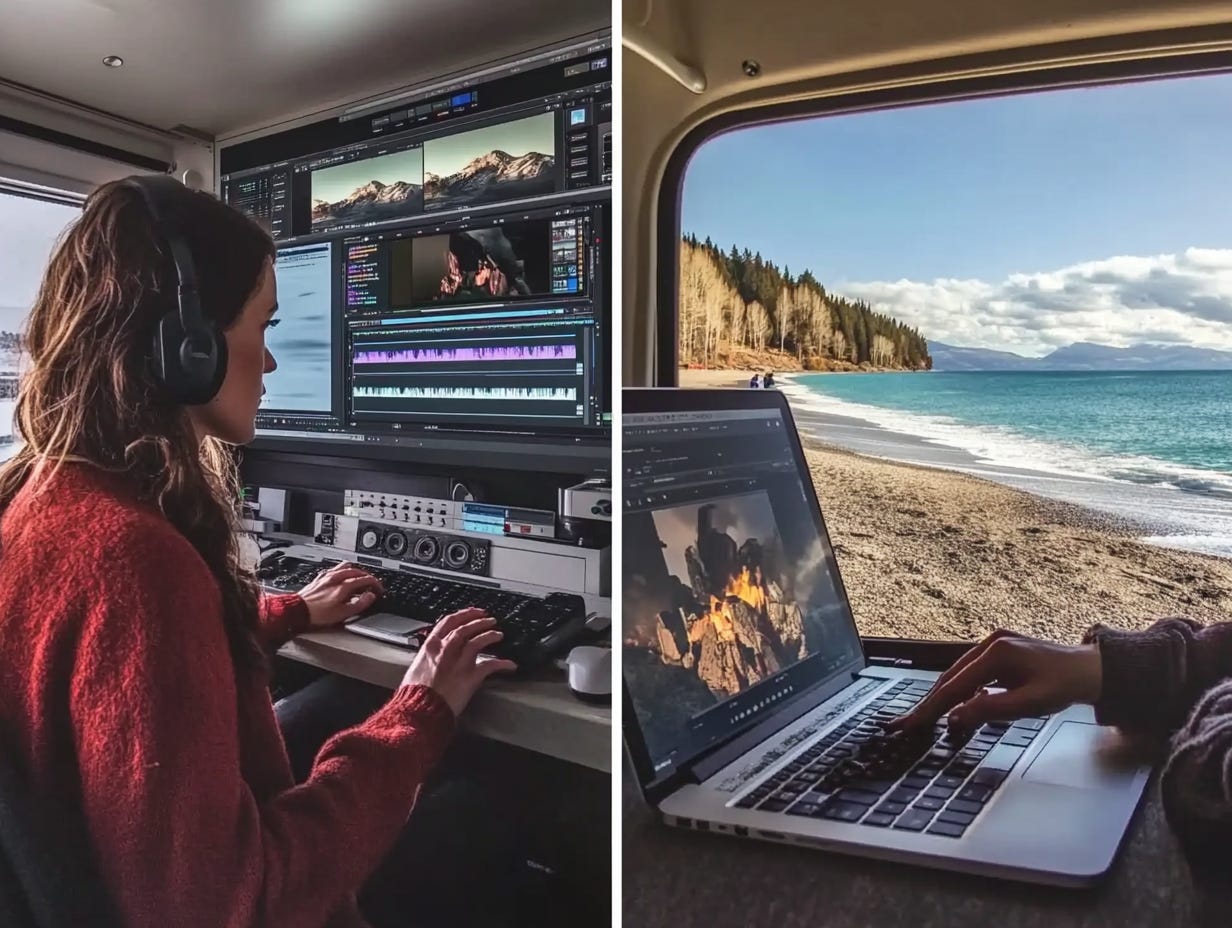3 - The Emancipation of Creators
The new rules of media are being written by the creators and their audiences
No More Waiting
There was a time when telling a story meant waiting. For funding. For permission. For access. For someone in a meeting room to say yes. That time is gone. Or at least, it’s going.
Creators are no longer lining up at the gates, they’ve started building other roads. The question is no longer "Will someone let me make this?" It’s "What’s stopping me now?"
Gatekeeping vs. Agency
Legacy media was built on gatekeeping, with the attendant training, hierarchy, and approval. You got in through internships, funding boards, talent schemes, nepotism, or just plain luck. It rewarded familiarity. Risk was managed, not welcomed.
But a new type of creator has emerged. Untethered from institutions. Empowered by tools. Guided by audience, not bureaucracy.
In our Tale of Two Documentaries, the legacy production is impressive - expertly lit, editorially vetted, approved, but glacial. The creator-led version is fast, intimate, rougher at the edges - but it connects. One version asks permission; the other simply begins.
A Different Kind of Entry
This shift didn’t arrive all at once. It came in waves:
Access to cheap, high-quality cameras: Filmmaking is no longer capital-dependent; anyone with a modest budget can now produce visually arresting work. Even Hollywood is using iPhones
Platform-native publishing removed shelf-space gatekeepers: Creators can now release to global audiences - and hear back in real time.
AI lowering the time and skill cost of research, editing, captioning, and delivery: What once required teams and weeks can now be done solo, swiftly, and with increasing sophistication.
Communities of creators sharing knowledge without hierarchy: Learning is peer-led, decentralised, and driven by curiosity - not credentials.
Cleo Abram didn’t just leave Vox to go independent - she left to build something only she could make. And audiences followed, not because of where she came from, but because of how she framed the world.
The creator makes the work they want, on their own timeline. They build a relationship with an audience. They are not scaled - they are specific. In a world of infinite content, specificity becomes a strength - it builds trust, identity, and depth that mass media rarely reaches.
Without support, they risk burnout. There’s no one to fix the audio, carry the tripod, or write the risk assessment. Consistency becomes its own trap.
But here’s the upside - the workflow bends to the story, not the other way around. They can pivot mid-project, turn feedback into new edits, publish in serial form, or shift tone entirely based on real-time response.
In the Tale of Two Documentaries, the creator’s journey is nonlinear, audience-responsive, and full of tiny course corrections. The legacy crew plans everything in advance. The creator learns by moving.
Capability Without Permission
Emancipation isn’t rebellion. It’s capability. It’s the confidence to act without someone else’s approval. It’s knowing how to tell a story from start to finish with a toolkit that fits in a rucksack.
Agency doesn’t mean amateurism. Many of the best new creators bring broadcast discipline to platform-native workflows - but on their own terms.
The most powerful creators now are not the ones waiting for green lights - they’re the ones already making, testing, publishing, and adapting.
A Light Tap to the System
Institutions still matter. But their role is shifting - from authority to support. If they want relevance, they’ll need to invest in capability, not control.
The next big documentary may not come from a commissioning round. It might already be on a hard drive, in a van, a boat, or a bedroom.
…and it may be mid-export.
Coming Next: 4 - The Reimagination of Editorial Functions
In part four, we explore how editorial judgment works when there’s no one left in the tower. How do creators and audiences decide what’s worth keeping, cutting, and releasing?
Read the previous parts:
1 - Broadcast Media, Wither or Whither?
2 - The Evolution of Legacy Media
This is part of Media Unmade - a series about how media breaks, reforms, and adapts in the age of AI and creator autonomy.
💬 Add your thoughts in the comments. Subscribe to follow the series. Let’s see where this thing’s going.


